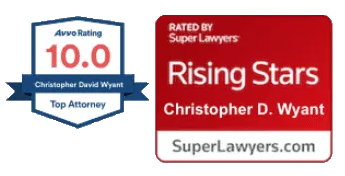Understanding the severity of dog bite levels is crucial in personal injury cases, as it directly impacts the legal strategies we employ and the potential compensation our clients can receive. One invaluable tool in this process is the Dunbar Dog Bite Scale.
In this blog post, we will explore the nuances of the Dunbar Dog Bite Scale, explain how each level is defined, and discuss how these classifications can influence the legal proceedings and outcomes of dog bite cases. This information is vital for victims to understand their rights and the possible implications of their injuries, as well as for dog owners to recognize the seriousness of their pet’s behavior.

Understanding the Dunbar Dog Bite Scale
When dealing with dog attacks, it is essential to accurately assess the severity of the dog bite levels. This not only helps in providing appropriate medical care but also plays a crucial role in legal and behavioral assessments. The Dunbar Dog Bite Scale, developed by veterinarian and animal behaviorist Dr. Ian Dunbar, is a standardized tool used to categorize the severity of dog bites. This scale helps in understanding the intent and danger posed by the dog during the incident, which can be pivotal in legal cases and in designing rehabilitation strategies for the dog.
What is the Dunbar Dog Bite Scale?
The Dunbar Dog Bite Scale is a numerical system used to rate the severity of bites inflicted by dogs. It ranges from Level 1 to Level 6, with each level describing the increasing severity and potential danger of the bite. This scale is widely used by veterinarians, behaviorists, trainers, and attorneys to assess and document dog bite incidents.
Dog Bite Levels Defined by the Dunbar Dog Bite Scale
Level 1: Air Snap or Near Miss
At this level, the dog’s teeth do not make contact with the skin. The dog may snap or lunge without actual contact, often as a warning. This level indicates that while the dog felt threatened or provoked, it chose not to bite.
Level 2: Skin Contact without Puncture
The dog’s teeth make contact with the skin but do not break the skin. This can include nips or bites where there is slight pressure against the skin. Often, these incidents result in marks on the skin from the dog’s teeth but no actual puncture or tearing.
Level 3: Shallow Puncture
This level involves one to four shallow punctures from a single bite with no puncture deeper than half the length of the dog’s canine teeth. There may also be some slight tearing or bruising around the wound. Level 3 bites show a more serious intent to harm but still lack the severe aggression of higher levels.
Level 4: Deep Puncture
This level indicates one to four deeper punctures from a single bite with at least one puncture deeper than half the length of the dog’s canine teeth. It may also include severe bruising around the wounds. A Level 4 bite suggests the dog applied strong biting pressure, which is more dangerous and indicative of a higher propensity for causing serious harm.
Level 5: Multiple-Bite Incident or Multiple Attack Bites
A Level 5 bite involves multiple bites with at least two Level 4 bites or multiple attack incidents. This level indicates a dog with less bite inhibition and a higher risk of causing severe injury. These cases often involve more aggressive behavior and require immediate behavioral intervention.
Level 6: Victim Death
The most severe level, where a bite results in the death of the victim. Level 6 bites are indicative of extremely aggressive behavior and pose significant safety risks to all potential victims around the dog.
Considerations for Indiana Attorneys
In Indiana, dog bite cases can be pursued under theories of negligence, strict liability, or under a “one bite rule,” depending on the circumstances. The specific dog bite levels of the Dunbar Scale can heavily influence the legal strategy, particularly in illustrating the dog’s vicious propensity and owner’s knowledge of such behavior. Accurate documentation and expert testimony regarding the bite level can be pivotal in these cases.
What is the One-Bite Rule?
The “one-bite rule” is a legal doctrine used in some states, including Indiana, that affects how dog bite cases are evaluated and litigated. Under this rule, a dog owner may not be held liable for the first bite or attack by their dog, assuming they had no prior knowledge of the dog’s vicious tendencies. Essentially, the rule implies that a dog gets “one free bite” before the owner can be considered negligent due to the dog’s behavior.
Exceptions to the One-Bite Rule
The one-bite rule may seem to provide dog owners with protection from liability after a first bite, but there are several notable exceptions. First, if it can be proven that the dog had previously exhibited aggressive behavior or engaged in threatening actions, even without biting anyone, the owner can still be held liable. Second, if the owner’s negligence played a role in the bite—such as failing to leash the dog in public or not securing their property—the one-bite rule may not apply, irrespective of the dog’s bite history. Additionally, some areas in Indiana have specific laws imposing strict liability on dog owners for any injuries or damages caused by their dogs, thus circumventing the one-bite rule. Lastly, if a dog bites someone while trespassing on another’s property, the owner may be liable for damages without the protection of the one-bite rule.
Attorney Christopher Wyant is here to help you. With over 17 years of experience, Attorney Wyant has spent his entire legal career representing individuals who have been injured or killed as a result of the carelessness of others. With trial experience in over 20 jury trials, he has handled cases involving wrongful death and personal injury arising out of automobile crashes, premises liability, slips and falls, dog attacks, and civil rights violations.
Impact of the One-Bite Rule on Personal Injury Lawsuits
The one-bite rule plays a pivotal role in shaping how personal injury lawsuits, particularly those involving dog bites, are managed in Indiana. A significant aspect of these cases hinges on proving whether the dog owner had prior knowledge of their pet’s aggressive tendencies. This often requires substantial evidence, such as previous complaints about the dog, past incidents of aggression, or testimonies from witnesses who observed the dog’s behavior.
For victims, overcoming the one-bite rule necessitates presenting a compelling case that clearly demonstrates the owner’s prior awareness of the dog’s dangerous nature or their negligence in controlling the animal. Conversely, dog owners may defend against such claims by proving there was no previous aggressive behavior exhibited by their dog or by showing they adhered to reasonable care standards.
The application of the one-bite rule also impacts settlements and damages. If the rule applies, the victim’s ability to recover damages might be limited unless exceptions to the rule are proven. This reality influences both negotiations and the potential outcomes of litigation.
For anyone involved in a dog bite incident in Indiana, understanding the implications of the one-bite rule is essential. Victims should seek legal counsel to help navigate the rule’s complexities and gather the necessary evidence to build a strong case. Dog owners, on the other hand, should be aware of their responsibilities and the potential for liability, even from a first bite, under certain circumstances. Ultimately, preventive measures and responsible pet ownership are the best ways to avoid such incidents and the ensuing legal complications.
Related Videos
How Long Does it Take to Settle a Personal Injury Case?
How should I choose a personal injury attorney for my claim?
Your Indiana Personal Injury Attorneys
Understanding the severity of dog bite levels is not only crucial for medical treatment but also for legal representation. Whether the bite was a minor snap without skin contact or a severe, multi-bite attack, the dog bite levels of the Dunbar Scale provides essential information that can help shape the legal strategy and potentially affect the outcome of a personal injury claim.
At Wyant Law, we are dedicated to providing legal guidance and support to victims of dog bites. Our team understands the physical, emotional, and financial toll that a dog bite can impose on individuals and their families. We are well-versed in the nuances of dog bite laws and are committed to advocating for the rights and well-being of our clients.
If you or a loved one has been a victim of a dog bite, we encourage you to reach out to us. Our experienced attorneys can evaluate your case, guide you through the complexities of the legal process, and help you secure the compensation you deserve for your injuries and suffering. Contact Wyant Law today to schedule a consultation and take the first step towards recovery and justice.



